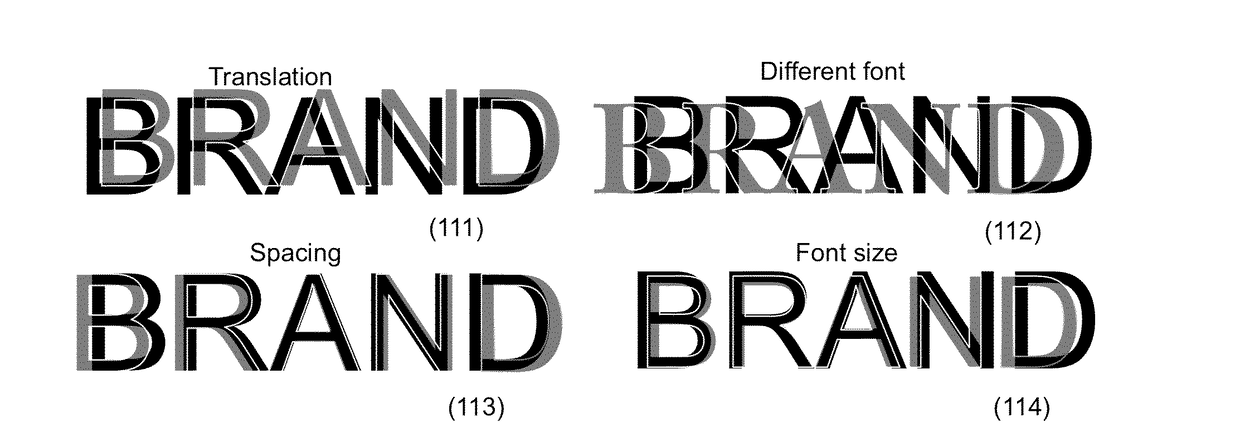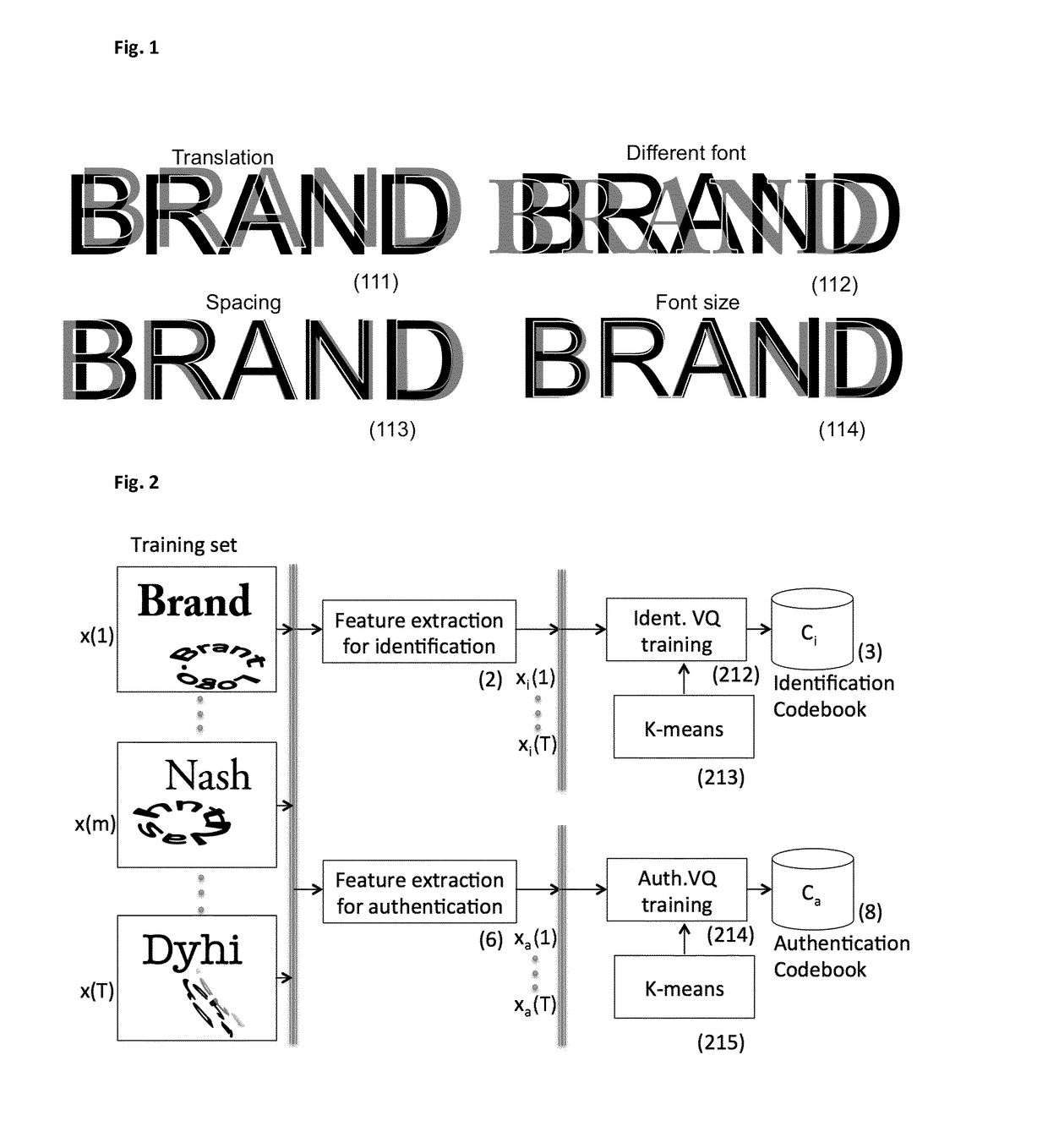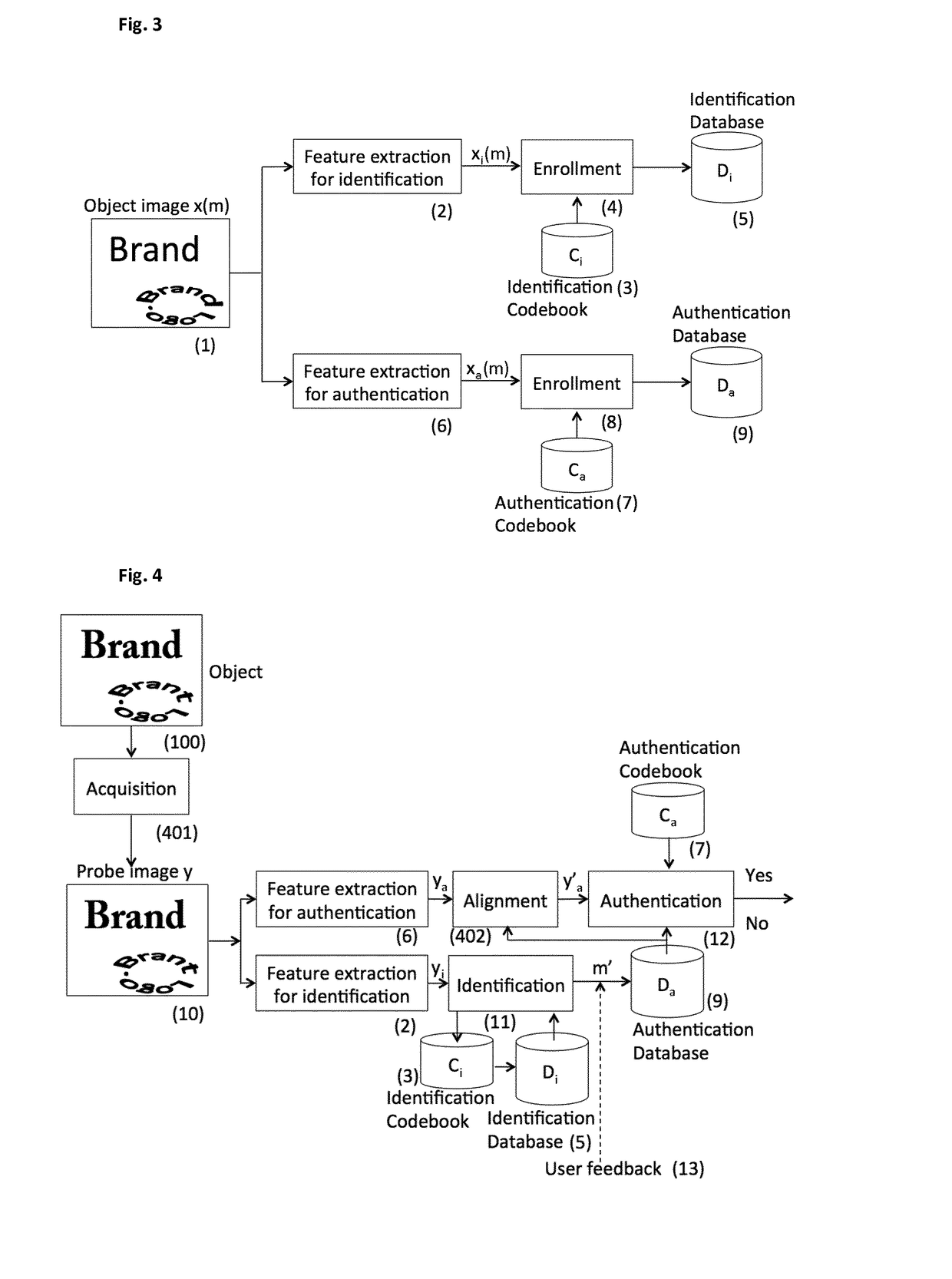Despite numerous efforts from brand owners and manufacturers, the end-consumers are not well aware, respectively cannot be well aware of the particularities of the original design of a given product or content which is often changed for various commercial and technical reasons and the entire spectrum of security features applied to protect a particular brand.
A similar situation also exists with respect to banknotes that are protected by quite sophisticated security techniques which, however, may not be verified by the average end-
consumer, but only by experts.
The problem is complicated by the fact that over the past several years, counterfeiters have gained access to sophisticated technologies that enable them to closely duplicate the brand products.
However, counterfeited products in most cases bear, as compared to the genuine products, some differences that can be easily recognized by trained experts but that are at the same time difficult or almost impossible to be recognized by casual consumers.
Previous attempts of the
security industry to introduce security technologies based on special detectors had little success.
This is due to the fact that it is commercially highly unattractive to produce specific hardware devices, which would need to be distributed and regularly upgraded on a global level, simply for verifying individual products.
Moreover, although there is a need for fast authentication of
consumer goods, end consumers show little interest in using specialized devices for anti-counterfeiting measures, respectively cannot have specific know-how that might be needed to use such specialized devices.
Moreover, such protection mechanisms do not always ensure
backward compatibility with products already produced in the past.
Therefore, even if a fake contains some imperfections, the inherent capability of digital watermarks to correct errors will “
mask” such imperfections and reduce the ability to detect the fake.
However, such product modification often is not acceptable to brands and manufacturers because of modifying the
product design and look, or complicating the existing manufacturing pipeline.
Being acceptable for new documents, these methods cannot cope with already produced documents.
Therefore, such methods do not provide protection for certain types of documents.
As a result, the fingerprints are not very robust in comparison to digital watermarks.
The lack of robustness leads to a large amount of errors or mismatches between the original
fingerprint and the
fingerprint extracted from a distorted counterpart of the original object.
In turn, this results in the necessity to perform a highly complex search and identification for trying to match the original
fingerprint and the extracted fingerprint.
As a result it is difficult to distinguish the errors due to the acquisition imperfections from those caused by content modifications.
However, the local nature of robust features does not make it possible to detect the small or invisible differences in the
object design or appearance.
Also, the application of fingerprinting methods for characterising materials that are used for the tracking and tracing of individual items is often not suitable due to (a) complexity of acquisition of a fingerprint from each item, (b) the management of huge databases and (c) searching in these databases that can be in the of order of billions of entries.
However, this approach meets serious technical constraints if applied to generic object identification, where the reproduced information might be highly variable and non-homogeneous.
Furthermore, apart from not being adapted for other types of objects than identity documents having a well defined structure, this framework is not adapted to be used on any kind of device, because many devices suffer from non-linear geometric distortions, which
impact the stability of the above mentioned descriptors.
Unfortunately, these block-wise features are not invariant to geometrical distortions, thus necessitating some form of pre-alignment.
However, this approach is obviously not applicable for generic objects that lack strict design elements.
In contrast, for authenticating any kind of objects
graphic design elements will be more distinctive and consequently also require more memory storage, such that the
verification procedure will be more computational intensive.
On top of that and similar to the previously described method, depending on the acquisition device used to acquire the entire page document, geometric distortions may be introduced in the acquired image patches burdening the
system and hurting performance.
At large scale, this is difficult to manage, store and search.
Moreover, it is impossible to see small imperfections or deviations by the
naked eye.
Moreover, the need to store and distribute the elements of design with a high level of details in an
open form accessible to humans is not well appreciated by brand owners for various security reasons, since leading to an easier clonability of objects as well as a leak of technological know-how to competitors.
In short, the above mentioned existing methods comprise several problems for a variety of reasons which comprise the need to introduce modifications, low discriminative capabilities,
high complexity of involved procedures, fundamental restrictions of humans to examine variations at
microscopic level or simply the lack of desire of doing so for the ordinary consumers, and the fact that
product design elements should be securely protected prior to storage in publicly available services or distribution to
consumer devices.
 Login to View More
Login to View More  Login to View More
Login to View More 


